- Sorry, this product is unavailable.
-
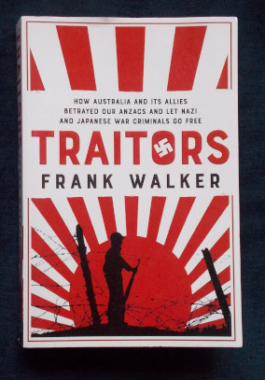
Traitors: Frank Walker
$20.00In October 1943 Winston Churchill, Franklin D. Roosevelt and Josef Stalin signed a solemn pact that once their enemies were defeated the Allied powers would 'pursue them to the uttermost ends of the earth and will deliver them to their accusers in order that justice may be done'. Nowhere did they say that justice would be selective. But it would prove to be just that. This book outlines the treachery of the British, American and Australian governments who turned a blind eye to those who experimented on Australian prisoners of war with details on how Nazis hired by ASIO were encouraged to settle in Australia and how the Catholic Church, CIA and MI6 helped the worst Nazi war criminals escape justice. While our soldiers were asked to risk their lives for King and country, Allied corporations traded with the enemy; Nazi and Japanese scientists were enticed to work for Australia, the US and UK; and Australia's own Hollywood hero Errol Flynn was associating with Nazi spies...What else did they hide? -
 What possessed the German people to embrace Hitler and his politics of mass murder? The author, an eminent historian, points to Goebbels' brilliant manipulation of the mass murderer as the key to the Fuhrer's success. Goebbels' diabolical propaganda machine exploited all communication: radio, posters, magazines, documentaries, brochures and spectacular films in the drive to capture the minds of millions. By the use of patriotic myth and tradition, a nation fell under a mass hypnosis on a scale never before paralleled. Illustrated with black and white photos.
What possessed the German people to embrace Hitler and his politics of mass murder? The author, an eminent historian, points to Goebbels' brilliant manipulation of the mass murderer as the key to the Fuhrer's success. Goebbels' diabolical propaganda machine exploited all communication: radio, posters, magazines, documentaries, brochures and spectacular films in the drive to capture the minds of millions. By the use of patriotic myth and tradition, a nation fell under a mass hypnosis on a scale never before paralleled. Illustrated with black and white photos. -
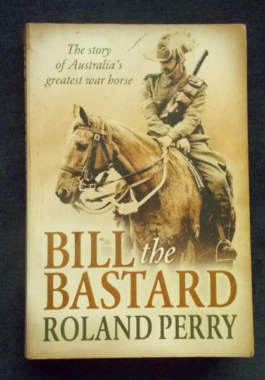 Bill was massive. He had power, intelligence and unmatched courage. In performance and character, he stood above all the other 200,000 Australian horses sent to the Middle East in the Great War. But as war horses go, he had one serious problem. No one could ride him but one man, Major Michael Shanahan. Some even thought Bill took a sneering pleasure in watching would-be riders hit the dust. This is a remarkable tale of a bond between a determined trooper and his stoic but cantankerous mount. They fought together. They depended on each other for survival. And when the chips were down, Bill's heroic efforts and exceptional instincts in battle saved the lives of Shanahan and four of his men. By September 1918, 'Bill the Bastard' was known by the entire Light Horse regiment, who used his name not as an insult, but as a term of endearment. Bill had become a legend, a symbol of the courage and unbreakable will of the Anzac mounted force. There was no other horse like Bill the Bastard.
Bill was massive. He had power, intelligence and unmatched courage. In performance and character, he stood above all the other 200,000 Australian horses sent to the Middle East in the Great War. But as war horses go, he had one serious problem. No one could ride him but one man, Major Michael Shanahan. Some even thought Bill took a sneering pleasure in watching would-be riders hit the dust. This is a remarkable tale of a bond between a determined trooper and his stoic but cantankerous mount. They fought together. They depended on each other for survival. And when the chips were down, Bill's heroic efforts and exceptional instincts in battle saved the lives of Shanahan and four of his men. By September 1918, 'Bill the Bastard' was known by the entire Light Horse regiment, who used his name not as an insult, but as a term of endearment. Bill had become a legend, a symbol of the courage and unbreakable will of the Anzac mounted force. There was no other horse like Bill the Bastard. -
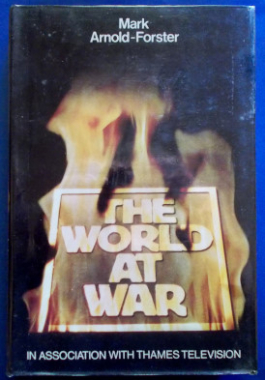
World War II, the most massive and appalling military conflagration in history began on September 1, 1939 when Hitler's troops invaded Poland and from there, it spread inexorably in all directions. On December 7 1941, the Japanese bombed Pearl Harbour, thus bringing the huge American armies into the picture and the Pacific was ablaze as Japan and America fought a devastating island-hopping war across the ocean. As well as swallowing millions of lives, the demands of the military machine gave rise to the atom bomb and the computer; the British Empire was dying but the Commonwealth was heralded; the war made Churchill and the 'spiv'; it created rationing and the Welfare State; it slaughtered 6,000,000 Jews, broke marriages and laid waste to the European economy. This is a graphic account of the fateful years that changed the world forever. Illustrated with black and white photos.
-
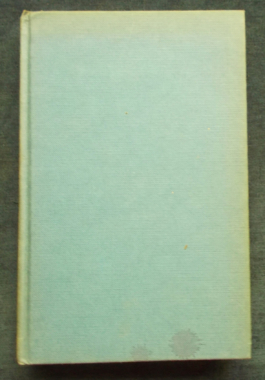
 They were American and British air force officers in a German prison camp. With only their bare hands and the crudest of homemade tools, they sank shafts, forged passports, faked weapons, and tailored German uniforms and civilian clothes. They developed a fantastic security system to protect themselves from German surveillance. It was a split-second operation as delicate and as deadly as a time bomb. It demanded the concentrated devotion and vigilance of more than six hundred men - every one of them, every minute, every hour, every day and night for more than a year. With black and white photographs.
They were American and British air force officers in a German prison camp. With only their bare hands and the crudest of homemade tools, they sank shafts, forged passports, faked weapons, and tailored German uniforms and civilian clothes. They developed a fantastic security system to protect themselves from German surveillance. It was a split-second operation as delicate and as deadly as a time bomb. It demanded the concentrated devotion and vigilance of more than six hundred men - every one of them, every minute, every hour, every day and night for more than a year. With black and white photographs. -
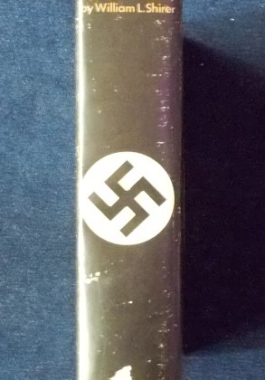
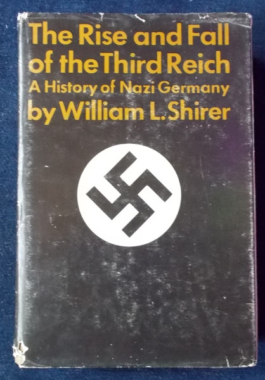
Here for the first time is the complete history of Hitler's empire. No other empire ever bequeathed to historians such mountains of evidence about its rise and fall as the Third Reich. The Allied demand for unconditional surrender produced - before the Nazis could destroy their files - an almost hour-to-hour record of the nightmare realm created by Hitler. This record includes the testimony of Nazi leaders, concentration camp inmates, the diaries of officials, transcripts of secret conferences, army orders, private letters - all the vast paper work behind a conspiracy to conquer the world. This is also the story of Hitler the man - his love affairs, his imprisonment, his suicide. There is also details of the plot to kidnap the Duke and Duchess of Windsor and hundreds of other inside stories. Most of all, it is the story of how Hitler destroyed his beloved Germany. The author, who watched and reported on the Nazis since 1925 had been reporting on-the-spot from Germany and Europe for almost forty years and spent over five years sifting the mountains of paper that eventually became this definitive history.
-
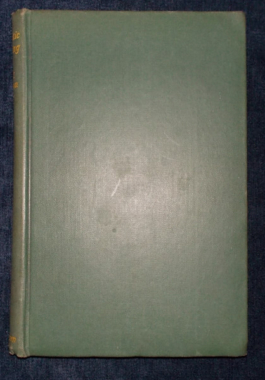
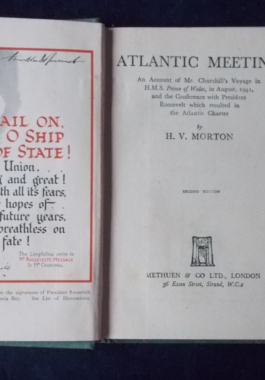 An account of Churchill's voyage in August 1941 on the Prince of Wales and his meeting with President Roosevelt, the outcome of which was the Atlantic Charter.
An account of Churchill's voyage in August 1941 on the Prince of Wales and his meeting with President Roosevelt, the outcome of which was the Atlantic Charter. -
 Using secret American, British and German sources previously unavailable, this story appears almost incredible. Few people know that behind all of the great decisions- and many of the small ones - of the past two world wars, lay information gathered from secret intelligence, either from agents or intercepted coded messages. At the time of writing the whole structure was still classified, yet Farago was able to obtain German records that had been lost for a generation, revealing a vast espionage network strung across Britain and the United States. He also shows how the Germans mopped up the British espionage network in 1939, and how it was painfully and carefully rebuilt by a new generation of British intelligence officers who cracked the German codes and fed false information to the Abwehr throughout the war, eventually contributing to the defeat of the Axis powers.
Using secret American, British and German sources previously unavailable, this story appears almost incredible. Few people know that behind all of the great decisions- and many of the small ones - of the past two world wars, lay information gathered from secret intelligence, either from agents or intercepted coded messages. At the time of writing the whole structure was still classified, yet Farago was able to obtain German records that had been lost for a generation, revealing a vast espionage network strung across Britain and the United States. He also shows how the Germans mopped up the British espionage network in 1939, and how it was painfully and carefully rebuilt by a new generation of British intelligence officers who cracked the German codes and fed false information to the Abwehr throughout the war, eventually contributing to the defeat of the Axis powers. -
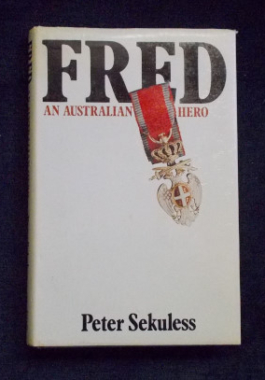 Toward the end of 1977, articles appeared in Australian newspapers about a remarkable 97 year-old Australian who had just died in Khartoum. They told of an heroic figure who had been with General Freyberg, then a junior officer, when he made his daring Dardenelles swim before the landing at Gallipoli; who had been mentioned in dispatches at the Battle of Beersheba; who had been with Lawrence of Arabia and who had won several decorations, including the George Cross for bravery under fire when he was chauffeur to the Governor-General of the Sudan at the time of his assassination in Cairo in 1924. He was one of the few Australians ever to win the coveted Serbian Eagle. This incredible Australian was Frederick Hamilton March. The newspaper articles so intrigued Sekuless than he began keeping a file on Fred March. Eventually, he travelled to Khartoum, Cairo, Gallipoli and London in a quest for information about this elusive and unknown Aussie hero to piece together the fascinating story of Fred March. Illustrated with black and white archival photographs.
Toward the end of 1977, articles appeared in Australian newspapers about a remarkable 97 year-old Australian who had just died in Khartoum. They told of an heroic figure who had been with General Freyberg, then a junior officer, when he made his daring Dardenelles swim before the landing at Gallipoli; who had been mentioned in dispatches at the Battle of Beersheba; who had been with Lawrence of Arabia and who had won several decorations, including the George Cross for bravery under fire when he was chauffeur to the Governor-General of the Sudan at the time of his assassination in Cairo in 1924. He was one of the few Australians ever to win the coveted Serbian Eagle. This incredible Australian was Frederick Hamilton March. The newspaper articles so intrigued Sekuless than he began keeping a file on Fred March. Eventually, he travelled to Khartoum, Cairo, Gallipoli and London in a quest for information about this elusive and unknown Aussie hero to piece together the fascinating story of Fred March. Illustrated with black and white archival photographs. -
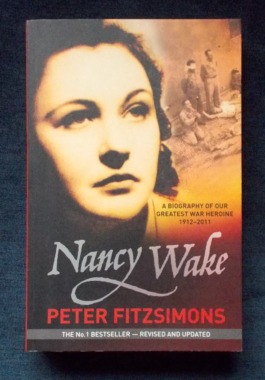
Nancy Wake: Peter Fitzsimons
$15.00In the early 1930s, Nancy Wake was a young woman enjoying a bohemian life in Paris. By the end of the Second World War, she was the Gestapo's most wanted person. As a naïve, young journalist, Nancy witnessed a horrific scene of Nazi violence in a Viennese street. From that moment, she declared that she would do everything in her power to rid Europe of the Nazis. What began as a courier job here and there became a highly successful escape network for Allied soldiers, perfectly camouflaged by Nancy's high-society life in Marseille. Her network was soon so successful - and so notorious - that she was forced to flee France to escape the Gestapo, who had dubbed her "the white mouse" for her knack of slipping through its traps. But Nancy was a passionate enemy of the Nazis and refused to stay away. Supplying weapons and training members of a powerful underground fighting force, organising Allied parachute drops, cycling four hundred kilometres across a mountain range to find a new transmitting radio - nothing seemed too difficult in her fight against the Nazis.Illustrated with black and white photographs. -

 Australian Richard Hillary joined RAF Fighter Command’s 603 Squadron in July 1940, then based in Scotland and flying the new Supermarine Spitfire. On 27 August 1940 the squadron moved south to London, the epicentre of the Battle of Britain, and within a week Hillary had shot down five Messerschmitt 109s, becoming an ‘ace’. But on his last sortie he was shot out of the sky over Dungeness, the cockpit of his Spitfire became engulfed in flames and Hillary was grievously burned as he desperately tried to bale out. Hillary was soon to become the most famous patient of the RAF’s pioneering plastic surgeon, Archibald McIndoe, and member of his ‘Guinea Pig Club’. He would endure months of painful surgery in an attempt to repair the damage to his hands and face, and allow him to return to active duty. Originally published in 1942, just months before he died in a second crash, The Last Enemy recounts the struggles and successes of a young man in the Royal Air Force.
Australian Richard Hillary joined RAF Fighter Command’s 603 Squadron in July 1940, then based in Scotland and flying the new Supermarine Spitfire. On 27 August 1940 the squadron moved south to London, the epicentre of the Battle of Britain, and within a week Hillary had shot down five Messerschmitt 109s, becoming an ‘ace’. But on his last sortie he was shot out of the sky over Dungeness, the cockpit of his Spitfire became engulfed in flames and Hillary was grievously burned as he desperately tried to bale out. Hillary was soon to become the most famous patient of the RAF’s pioneering plastic surgeon, Archibald McIndoe, and member of his ‘Guinea Pig Club’. He would endure months of painful surgery in an attempt to repair the damage to his hands and face, and allow him to return to active duty. Originally published in 1942, just months before he died in a second crash, The Last Enemy recounts the struggles and successes of a young man in the Royal Air Force. -
 An oral history of D-Day where the stories of that long and violent day on the Calvados Coast of Normandy are told in the words of the men who were Americans, British, Canadians, French and German. Follow these men ashore, up the beach, and into the battle for Normandy. The men who landed on UTAH and OMAHA beach, cracked the Atlantic Wall at Arromanches, parachuted into Carantan or Ste Mere Eglise, or stormed Pegasus Bridge and the Merville battery, tell the reader what it was like to be there, in the midst of the most important single battle of World War II. The view from landing ship, tank turret, parachute harness or infantry fox hole has never been better told than in the pages of this absorbing book. Illustrated with archival photographs.
An oral history of D-Day where the stories of that long and violent day on the Calvados Coast of Normandy are told in the words of the men who were Americans, British, Canadians, French and German. Follow these men ashore, up the beach, and into the battle for Normandy. The men who landed on UTAH and OMAHA beach, cracked the Atlantic Wall at Arromanches, parachuted into Carantan or Ste Mere Eglise, or stormed Pegasus Bridge and the Merville battery, tell the reader what it was like to be there, in the midst of the most important single battle of World War II. The view from landing ship, tank turret, parachute harness or infantry fox hole has never been better told than in the pages of this absorbing book. Illustrated with archival photographs. -

Being Reports on Various New Zealand Towns and Country Places and On Some of the Doings of Their People as Described in Korero, Magazine of the Army Education Welfare Service. Korero was an illustrated troop magazine, a fortnightly bulletin that contained articles, sketches and verse of interest to members of the Armed Forces. Contributions were sought from individuals within the New Zealand Armed Forces and were intended to give New Zealanders serving overseas a brief survey of the towns and districts they had left. A maximum of £3 in canteen orders was made as payment. The surveys are not profound social studies nor are they superficial - but they are observant and sympathetic. Drawings were used rather than photographs as photographs did not reproduce well on newsprint. Illustrated with excellent black and white sketches. Korero is Maori for talk, discussion or meeting.
-
 By late May 1940 the German Army had raced across Northern France cutting the Allied armies in two. The British Expeditionary Force ,and thousands of French and Belgian soldiers, found themselves squeezed into a ever smaller pocket by the Wehrmacht while the Luftwaffe pounded them from the sky. For nine terrible days they held their ground until - eventually - they had to evacuate. A quarter of a million men battled their way across the bullet-swept beaches to ships - and escape. This is the story of what is simultaneously a terrible defeat and a stirring victory.
By late May 1940 the German Army had raced across Northern France cutting the Allied armies in two. The British Expeditionary Force ,and thousands of French and Belgian soldiers, found themselves squeezed into a ever smaller pocket by the Wehrmacht while the Luftwaffe pounded them from the sky. For nine terrible days they held their ground until - eventually - they had to evacuate. A quarter of a million men battled their way across the bullet-swept beaches to ships - and escape. This is the story of what is simultaneously a terrible defeat and a stirring victory. -
 In many ways, the Digger is a study in contradictions: he doesn't crave war, yet he will fight with unequalled ferocity; he hates spit and polish but will hold his discipline under the most trying conditions; he is tough, yet compassionate; he hates his enemy until he surrenders, then is generous in victory; he despises histrionics but will cry unashamedly at the loss of a mate...The Digger is a key piece of the complex jigsaw puzzler that makes up 'The Australian' - but who is the Digger, exacatly? What elements have gone into forging his spirit?They have won acclaim for their fighting prowess and bravery, while retaining their larrikin spirit, their compassion and their strong sense of mateship. Those who fought in the trenches of Gallipoli, the Somme and Ypres have an immediate kinship with those who followed in NorthAfrica and New Guinea; then later in Korea, Vietnam, East Timor, Iran and Iraq. Australians can be proud of the heritage our Diggers have bequeathed to us. Illustrated with black and white photos.
In many ways, the Digger is a study in contradictions: he doesn't crave war, yet he will fight with unequalled ferocity; he hates spit and polish but will hold his discipline under the most trying conditions; he is tough, yet compassionate; he hates his enemy until he surrenders, then is generous in victory; he despises histrionics but will cry unashamedly at the loss of a mate...The Digger is a key piece of the complex jigsaw puzzler that makes up 'The Australian' - but who is the Digger, exacatly? What elements have gone into forging his spirit?They have won acclaim for their fighting prowess and bravery, while retaining their larrikin spirit, their compassion and their strong sense of mateship. Those who fought in the trenches of Gallipoli, the Somme and Ypres have an immediate kinship with those who followed in NorthAfrica and New Guinea; then later in Korea, Vietnam, East Timor, Iran and Iraq. Australians can be proud of the heritage our Diggers have bequeathed to us. Illustrated with black and white photos. -

The author assesses and explains the role of Goering, dismissing the popular image of the corrupt and indolent buccaneer in order to show the central and serious political role that Goering played in the Third Reich. He shows all facets of Goering's personality, as well as the political context in which he exercised so much power.
-
 The Von Bock memoirs allow the reader to see the entire drama of the Second World War through the eyes of one of Germany's most important military commanders. After the attacks on Poland and Western Europe, campaigns that he helped bring to a successful conclusion, Von Bock became Commander-in-Chief of Army Group Center which carried out the main drive on Moscow during Operation Barbarossa and brought the Red Army to the verge of collapse. Hitler relieved Von Bock when the German offensive bogged down during the winter of 1941/1942. After he returned as Commander-in-Chief of Army Group South, Von Bock was eventually placed in temporary 'retirement' when he critised Hitler's division of forces against Stalingrad and the Caucasus - and the road to catastrophe began. Army commanders like Hoth, Guderian, Kluge and Paulus served under Von Bock, while at his side was his nephew Henning von Tresckow, who led the most active resistance movement against Hitler, and Carl-Hans von Hardenberg, a friend and advisor of Von Stauffenberg. Their efforts to win him over to the resistance failed, yet Von Bock the pronounced resistance sentiments among his staff, and even became privy to the attempted assassination of Hitler on July 20, 1944. This book allows us to reassess Fedor Von Bock, whose complex personality is revealed by his diary entries.
The Von Bock memoirs allow the reader to see the entire drama of the Second World War through the eyes of one of Germany's most important military commanders. After the attacks on Poland and Western Europe, campaigns that he helped bring to a successful conclusion, Von Bock became Commander-in-Chief of Army Group Center which carried out the main drive on Moscow during Operation Barbarossa and brought the Red Army to the verge of collapse. Hitler relieved Von Bock when the German offensive bogged down during the winter of 1941/1942. After he returned as Commander-in-Chief of Army Group South, Von Bock was eventually placed in temporary 'retirement' when he critised Hitler's division of forces against Stalingrad and the Caucasus - and the road to catastrophe began. Army commanders like Hoth, Guderian, Kluge and Paulus served under Von Bock, while at his side was his nephew Henning von Tresckow, who led the most active resistance movement against Hitler, and Carl-Hans von Hardenberg, a friend and advisor of Von Stauffenberg. Their efforts to win him over to the resistance failed, yet Von Bock the pronounced resistance sentiments among his staff, and even became privy to the attempted assassination of Hitler on July 20, 1944. This book allows us to reassess Fedor Von Bock, whose complex personality is revealed by his diary entries.




